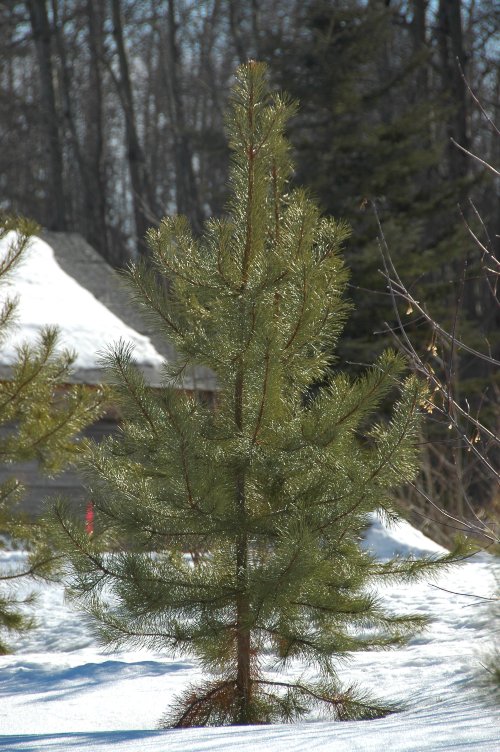Infrastructure required for growth.
New things for SFTF
While a lot of these notes are relatively independent, there are several that can to be combined for a high degree of synergy.
2nd Well
The present well delivers about 10 gpm at the house on an open pipe, and 6 gpm at the pot yard. We had a pump test done. In 2020 we replaced the 40 year old pump with a newer grundfos pump, and had the well reworked.
It’s 4 inch casing. You can get somewhat better performance with a larger casing. Once you have paid for a well rig to get here, the differential cost of 6 inch casing vs 4.5 inch is small.
You can put a second well either at the house where connection to power is easier, or at the tree yard where connection to plumbing is easier. It’s more efficient to move power than to pump water, and electricity at the tree yard makes many things possible.
Costs for a well range from 10 to 20 thousand. There may be merit it a bored well -- larger diameter equals faster water collection.
In either case we will want a variable drive pump. This gives us a bunch of features:
* The pump doesn’t draw as much power starting.
* The pump starts more slowly, so there is less shock to the plumbing.
* The pump doesn’t start and stop, but as long as you are using 1 gpm will just slow down enough to maintain the set pressure.
* We can program the pump to be cyclic in output pressure. This can make sprinklers more even in performance.
Soil Mixer
The present mixer is a converted silage mixer. It is well worn, and has trouble when working with more than 1 heaping tractor bucket of mixed field soil and compost. It’s powered by a 9 HP subaru 4 cycle gas engine. The latter is reliable, but noisy.
Be careful in your specifications when replacing the mixer. Most nursery mixers are designed for the ultralight bark + peatmoss mixes that companies use to minimize freight costs. These mixes drain too fast to use with drip irrigation. (You end up with a 2 inch column of wet mix directly under the drip.
Potting Machine
This is a false economy. It takes 3-4 people to run a potting machine, and at least another two to haul the filled pots away. The machines handle only one size pot at a time. That doesn’t mean just 2 gallon pots. It means a Nursery Container G2-71 pot. At one point to be neat, I separated the different sizes of #2 pots. There are at least 23 sizes that are incompatible enough to jam when you stack them.
The present potting table is one answer. this allows two people to work with small containers, with small amounts of interference.
A conveyer that moved mixed soil to the middle of a wider table would be effective. Use a belt type, not an auger type.
Electrical Power.
Depending on how we rearrange it we need to put in 450 to 600 feet of powerline. 450 feet goes from the present pole with transformer out to the middle of of the potting/ hoarding yard. Capacity has be designed for the combination of the well plus a new soil mixer. Requirements can be lowered substantially by putting in variable frequency drives on all high power devices. This also saves wear and tear.
Workshop / Classroom
Having a proper farm shop is attractive. If kept neat it is also a place where you can run workshops, and teaching events. With electrical power, you can use various tools in workshops. e.g. drills if doing a course in willow furniture.
A workshop provides an indoor branch point for power: A line to the well, a line to the soil mixer.
Coldroom
My idea for a coldroom would require minimal power. Lights and a fan. During part of the year, it can be used for storage, but since it needs to be emptied by late April, don’t count on it for anything that can’t get wet. Don’t even think about storing stuff in there with the trees in there, since the humidity is close to 100%. Rust never sleeps.
I briefly considered making the buildings adjacent, or even sharing a foundation. However a cold room depends on making the ground under it very cold. While the workshop may be unheated much of the time, we don’t want it’s foundation to freeze multiple feet deep. Keep them separate. Run the coldroom on an extension cord.
There may be merit in having a roofed over breezeway between the two buildings. This makes a pleasant work area outside.
Internet
Cell phone service is spotty at the pot yard. Data even more so. One of the ways to help people help themselves is to have signage with QR codes that link to our web site. In addition this gives more reliable ways for the office staff (Laura...) to get ahold of the field staff (me...). In principle I should be able to phone over internet from the pot yard, which would work a lot better than texting back and forth.
RVs for Worker/Woofer accommodation
As a side effect of running a line to the potting area we have power along a strip of bushland. With some additional clearing, this becomes an attractive place to put RV’s for staff accommodation. You need to do some serious thinking about this. Even small RV units use considerable power. At minimum to make a place independent:
- Lights
- Exhaust fan
- Refrigerator
- Stove (propane)
- Toilet
- Shower
- Computer
- Music/TV
The big power users are Microwave, air conditioner, and refrigerator. There are propane powered fridges. Start at Costco. This may be a selection feature when looking at RVs. Various sources say a fraction of a pound to 1.5 pounds of propane a day. So a 20 pound cylinder would last around a month. Propane runs 40-80 cents a pound, and you have the aggravation of lugging tanks. This means a fridge would cost a buck a day to run.
You should count on 1000 watts per RV unit. I think peak demand will be below this, but much depends on the unit you buy. This will require some form of distribution panel for each pair of RVs, figuring that each would get 1/2 of a 220v circuit. In turn, this will require a weatherproof breaker box, and connection point. (RV’s are designed to basically plug the whole unit in on a heavy duty extension cord.) I’ve not done all the number crunching for this yet.
So this idea is still in the cost development phase. It may be cheaper to build a shack, since they won’t have winter use. This allows more room, and allows conventional furniture.
One summer camp I worked at had staff cabins that were 12 x 16, slept 4. Outhouse. Meals at the mess hall. This is going too far. But a 16 x 24 A-frame cabin, with a half loft, kitchenette, mouldering toilet outside, and somewhere a shower facility may be quite workable.
Restroom facilities
At present the occasional customer uses our bathroom at the house. If we move in the directions of more of a garden centre, teaching centre, permaculture event centre then on site facilities are needed. Conventional construction for this is expensive. Consider something like Sunny John This then becomes part of a workshop.
The mouldering design lends itself to an erratic use scenario. A system with room for 2 barrels per seat would be quite adequate. One room should have a baby change table.
Height requirements for the barrels mean that the facility has to be built on a platform about 4 feet off the ground. If it has a solid foundation, could be banked earth on 3 sides. This would help keep the temperature reasonable.
Separate disposal for diapers and feminine hygiene products.
Build it with some form of adjustable awning to prevent overheating in summer, but allow solar warming in winter.
Water should be gravity fed. Some ingenuity will be needed to keep water from freezing in winter, especially the line from the tank to the tap. Ideas:
Valve is at the tank, operated by a pull chain. Entire line drains. This gives some seconds of running water after the valve is released.
Tank is filled with salt water so it stays liquid at colder temps.
No attempt is made to keep it in winter. Drain the tank, and provide wet-wipes.
A unit like this would cost somewhere in the vicinity of $500 to $2000. Water for it would be solar heated, and wash water distributed on the ground.
Downsides
Being unconventional may be a strike against it.
The design is not portable. This would mean some duplication of effort if you go forward with the Christmas Tree project.

Lodgepole Pine in our front yard.
Got something to say? Email me: sfinfo@sherwoods-forests.com
Interesting? Share this page.
![]() Share
Share
Want to talk right now? Talk to me: (8 am to 8 pm only, please) 1-780-848-2548
Back to Top
Copyright © 2008 - 2018 S. G. Botsford
Sherwood's Forests is located about 75 km southwest of Edmonton, Alberta. Please refer to the map on our Contact page for directions.
